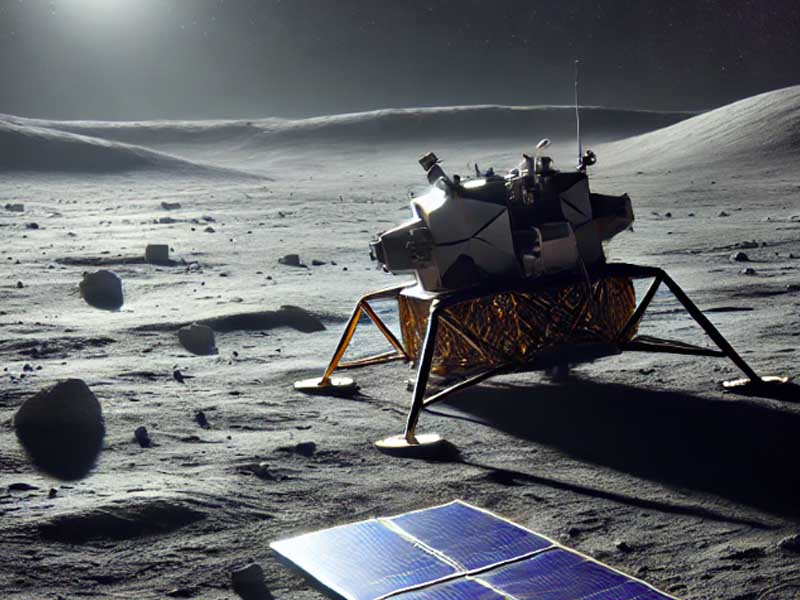
Arcadiadaily – Toppled Spacecraft has failed to complete its ambitious lunar mission, according to a statement from Intuitive Machines. The private spacecraft, named Athena, successfully touched down near the Moon’s South Pole on Thursday at 17:30 GMT (12:30 EST). However, the company later confirmed that the craft had landed on its side, severely limiting its ability to generate power and continue its operations.
The mission, known as IM-2, was designed to explore the lunar surface for 10 days in search of water ice, a crucial resource for future human habitation on the Moon. However, with its solar panels improperly positioned and facing extreme cold temperatures, Athena is unable to recharge. “With the direction of the sun, the orientation of the solar panels, and extreme cold temperatures in the crater, Intuitive Machines does not expect Athena to recharge,” the company announced.
“Revolutionizing Heavy Machinery with Hybrid Technology”
Toppled Spacecraft has left many scientific instruments unused, casting doubt on the success of the mission’s key objectives. The lander carried a drill to probe lunar soil, a hopping robot to explore shadowed craters, and the first lunar antenna to enhance communication capabilities. However, due to its compromised position, these tools are unlikely to function as intended.
Dr. Simeon Barber, a lunar scientist at the Open University, noted, “Clearly the mission can only have achieved a fraction of its science goals.” Despite the setback, some instruments may have briefly functioned upon landing, including a drill and a mass spectrometer meant to analyze gases from the lunar surface, potentially yielding some useful scientific data.
Toppled Spacecraft highlights both the risks and rewards of commercial lunar exploration. Athena made history as the first lander to reach the challenging Mons Mouton region. A flat-topped mountain approximately 100 miles (160 km) from the Moon’s South Pole. However, the difficulty of landing in this region was evident. As the low angle of the sun and deep shadows created challenges for navigation and power generation.
The IM-2 mission’s struggles contrast with the recent success of Firefly Aerospace. Another private company that landed a spacecraft on the Moon without major issues. NASA, which partnered with Intuitive Machines for this mission. Aims to send four astronauts to the Moon by 2027 as part of the Artemis program. These efforts seek to use the Moon as a stepping stone for future human exploration of Mars.
Dr. Barber emphasized that failures should be viewed within the broader context of progress: “In the face of setbacks. It requires a steady hand on the tiller and the vision to see the bigger picture. Knee-jerk responses to failures could cause damage and delay.” While the IM-2 mission did not go as planned, it provides valuable lessons for future lunar exploration efforts. Reinforcing the importance of resilience and adaptation in space exploration.
“Mastering Strategic Skills: The Key to Standing Out”